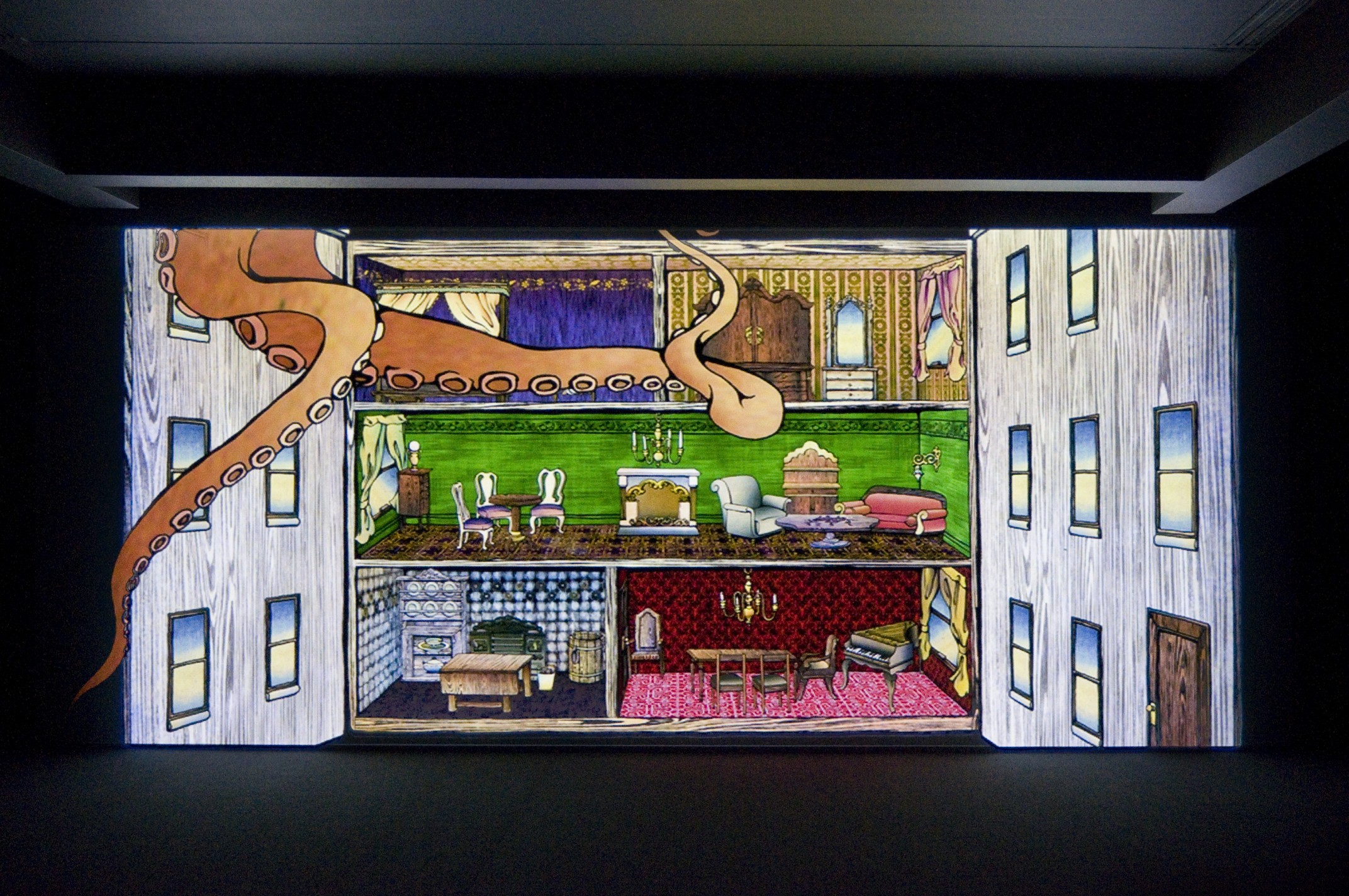Hands, Octopuses, and a Dolls’ House
In the video 'Dolefullhouse', artist Tabaimo illustrates how Japanese society has lost its bearings by drawing on its symbols.

Tabaimo, “DolefullHouse” © James Cohan Gallery
Animated tales somewhere between the comical and the grotesque, against a backdrop of a tragic reality: this is how Tabaimo’s dark films are constructed.
The artist, whose real name is Ayako Tabata, was born in 1975 and lives and works in Nagano. She first trained in Japanese painting at the University of Art and Design in Kyoto before moving to London and working for illustrator Jonathan Barnbrook’s agency. Since returning to Japan in 2005, she has dedicated herself fully to her artistic practice. She achieved international recognition in 2011 when she represented Japan at the Venice Biennale with her video installation teleco-soup.
Between video art, animated film, and drawing, Tabaimo combines multiples references. The artist’s universe brings together the cultural codes regularly linked to Japan and depicts the evils specific to its contemporary society. The artist uses dark humour to present a critique of a harsh society that’s losing its bearings.
Surrealism as a tool for reflection
In DolefullHouse (2007, 6:21), the artist presents a dolls’ house and a bourgeois universe that evolves over time, in a surrealist atmosphere. The video begins with the ‘opening’ of the façade of the house by human hands, letting out the water that was contained inside. The hands then move inside the house, putting the interior in order, adding furniture and decoration. As the minutes pass, the hands start to scratch each other frantically, and octopuses—highly symbolic animals in Japanese culture—try to enter the house. The gestures become more sudden and the hands end up going inside the house, weakening the structure. When the façade closes, the viewer can see human organs in the water. The artist’s message might seem confused, as the action can be interpreted in various ways. However, Tabaimo refuses to reveal its meaning, allowing the public to form their own opinion.
The originality of the piece lies in an unusual articulation of symbols in Japanese culture (here, an octopus), ordinary places and environments, and the technique of animation that is extremely popular in Japan.
In another register of her body of work, the series of drawings entitled flow-wer depicts flowers springing out of human organs. Her work has found its way into the collections at leading institutions such as the Cartier Foundation for Contemporary Art (Paris), the Japan Foundation (Tokyo), and the Museum of Contemporary Art (Los Angeles).
DolefullHouse (2007), is a video created by Tabaimo, an artist represented by the James Cohan Gallery.

Tabaimo, “DolefullHouse” © James Cohan Gallery
TRENDING
-
The Tattoos that Marked the Criminals of the Edo Period
Traditional tattoos were strong signifiers; murderers had head tattoos, while theft might result in an arm tattoo.

-
‘Shojo Tsubaki’, A Freakshow
Underground manga artist Suehiro Maruo’s infamous masterpiece canonised a historical fascination towards the erotic-grotesque genre.

-
The Story of Sada Yacco, the Geisha who Bewitched Europe
Described by Dazed magazine as the first beauty influencer, she has been restored to her former glory since 2019.

-
Ito Jakuchu's Naturalist Paintings
From 15 September until 14 October 2018, the Petit Palais showcased the artist's iconic ‘Images of the Colourful Realm of Living Beings’.

-
Chiharu Shiota, Red Threads of the Soul
Last year, more than 660,000 people visited the retrospective 'Chiharu Shiota: The Soul Trembles' exhibit at the Mori Art Museum.





